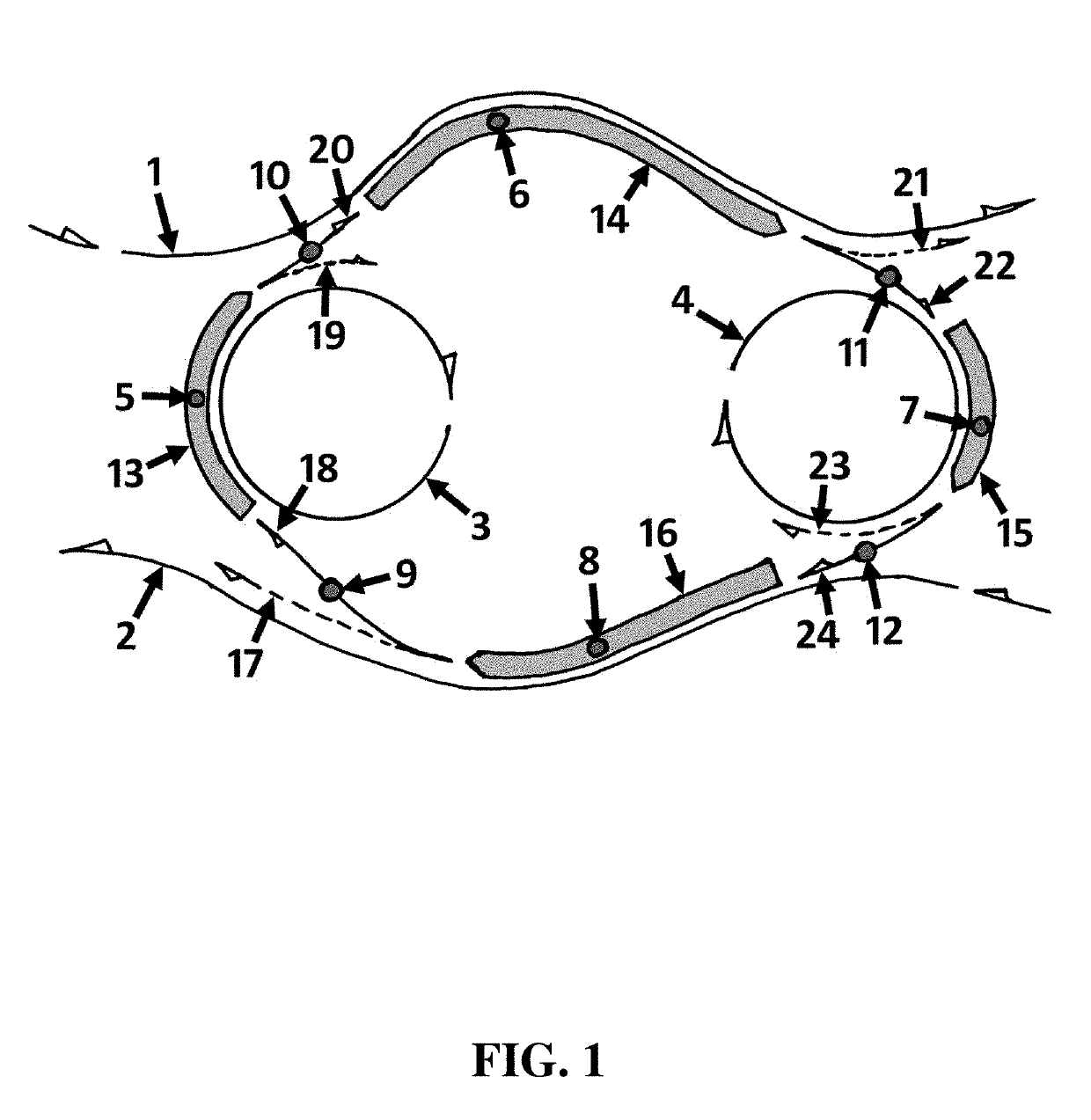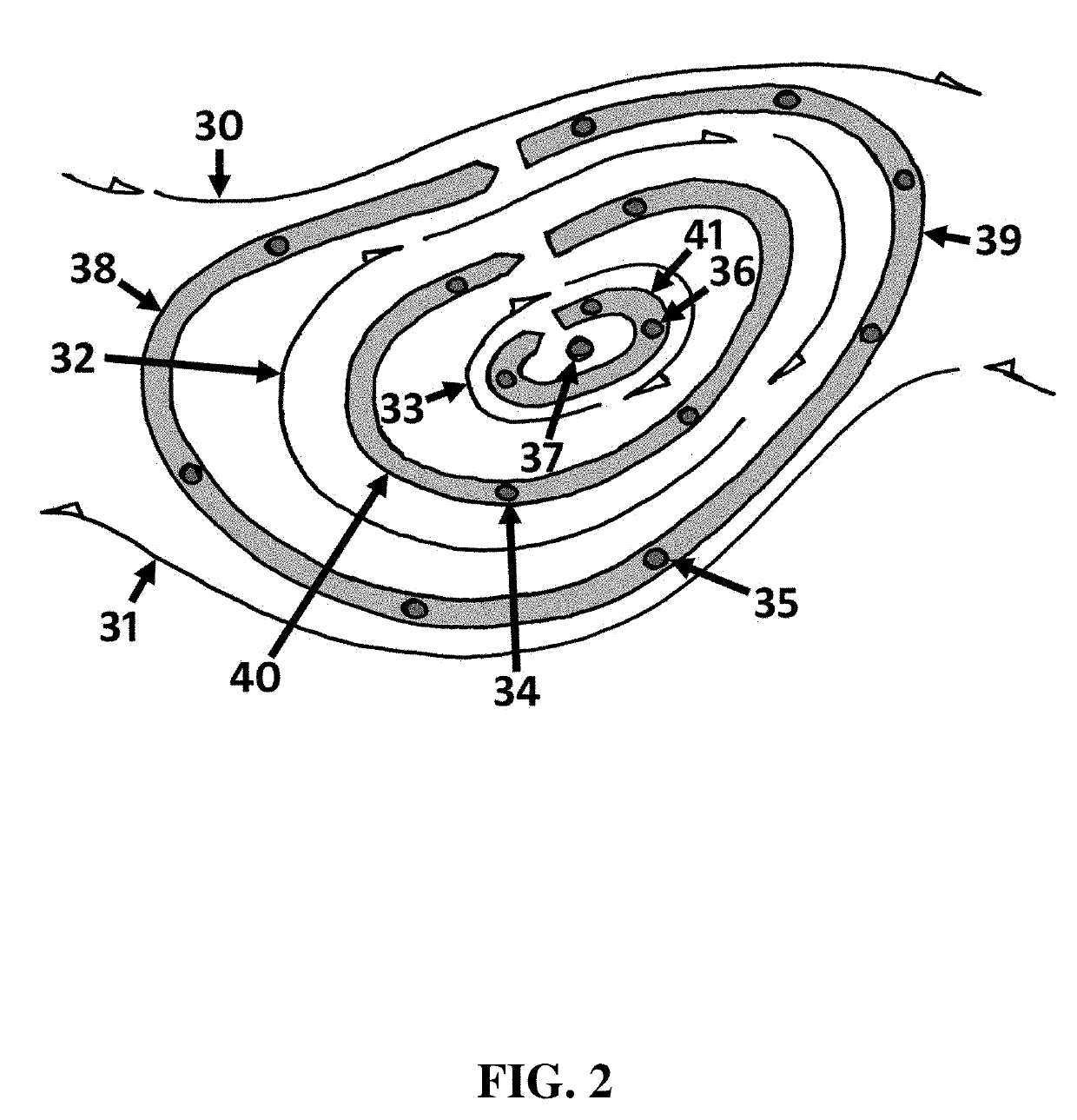Self-powered, self-propelled computer grid with loop topology
a computer grid and loop topology technology, applied in the direction of position/direction control, wind energy generation, underwater vessels, etc., can solve the problems of limiting the development of computing, unable to permit cost-effective harvesting of energy from high-energy areas of the sea, and the time of energy infrastructure becomes the limiting factor on computing development, etc., to achieve the effect of efficient harvesting
- Summary
- Abstract
- Description
- Claims
- Application Information
AI Technical Summary
Benefits of technology
Problems solved by technology
Method used
Image
Examples
embodiment 530
[0419]Attached to an upper deck 548 of the buoy of the embodiment 530 are rows of antennas, e.g., 537, that form a phased array antenna in which signals driving each individual antenna, e.g., 537, are adjusted by phase so as to direct the resulting beam. Similarly, the phase of the signals received by each antenna are adjusted so as to narrow or constrict the direction from which signals may be received.
[0420]FIG. 38 shows a side perspective view of a type of self-propelled energy harvesting device (an “SPEHD”) which an embodiment of the current disclosure might include.
[0421]A buoyant structure 560, buoy, float, barge, boat, ship, and / or buoyant platform, floats adjacent to an upper surface 561 of a body of water. The buoy 560 has a “v-shaped” hull, a pair of propellers, e.g., 562, and a rudder 563, facilitating the self-propelled movement of the embodiment through the water 561 (e.g., in directions approximately opposite the propeller-generated thrust).
embodiment 560
[0422]An open-bottomed water tube 564 is incorporated within the embodiment 560 near the center of buoy 560 (with respect to a horizontal plane and cross-section) and has a vertical longitudinal axis that is approximately coaxial with a vertical longitudinal axis of the device. Because the bottom 565 of the water tube 564 is open to the water below, water 566 tends to move into, and out of, the water tube. As water oscillates vertically and / or longitudinally within the water tube 564, especially in response to wave motion, a pocket of air (not visible) trapped near the top of the water tube is cyclically compressed and decompressed.
[0423]When the air pocket is compressed, a one-way valve (not visible) allows a portion of the compressed air to flow into a high-pressure accumulator (not visible) within the buoy 560 after which it flows through a tube 567 into a tubular channel 568 within which a turbine (not visible) extracts energy from the flowing air and causes a generator 569 to g...
embodiment 800
[0486]The embodiment 800 floats adjacent to an upper surface 801 of a body of water over which waves pass. The embodiment contains a buoyant, and / or buoy, portion 800 and a depending tubular portion 802. As waves cause the device 800 to move up and down, water within the tube 802 moves up and down as well, causing water to move 803 in and out of the tube 802 through the tube's lower mouth 804. A power take off (PTO) within the device's buoy and / or tube converts a portion of the energy inherent in the movements of water within the device's tube 802 into electrical power. The device illustrated in FIG. 47 uses a piston within the tube to drive a hydraulic PTO. An device similar to the one illustrated in FIG. 47 uses a magnetohydrodynamic PTO to generate electrical power directly from seawater moving up and down within the tube 802. Other devices similar to the one illustrated in FIG. 47 use different mechanisms, methods, and PTOs in order to extract electrical power from the water mov...
PUM
 Login to View More
Login to View More Abstract
Description
Claims
Application Information
 Login to View More
Login to View More - R&D
- Intellectual Property
- Life Sciences
- Materials
- Tech Scout
- Unparalleled Data Quality
- Higher Quality Content
- 60% Fewer Hallucinations
Browse by: Latest US Patents, China's latest patents, Technical Efficacy Thesaurus, Application Domain, Technology Topic, Popular Technical Reports.
© 2025 PatSnap. All rights reserved.Legal|Privacy policy|Modern Slavery Act Transparency Statement|Sitemap|About US| Contact US: help@patsnap.com



